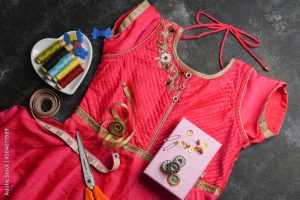
The world of fashion couture is known for its exquisite craftsmanship, attention to detail, and bespoke creations that cater to the individual tastes and preferences of clients. However, one challenge that fashion couture businesses often face is the high cost associated with returns and alterations. In this blog, we will explore strategies to optimize operations and minimize these costs, ultimately enhancing customer satisfaction and profitability.
- Accurate Measurements and Consultations
One of the most common reasons for returns and alterations in fashion couture is ill-fitting garments. To mitigate this issue, invest in thorough measurement processes and consultations with clients. Ensure that your team of skilled professionals takes precise measurements, paying attention to even the smallest details. A well-fitted garment from the start reduces the need for alterations and returns.
- Prototyping and Fittings
Prototyping and fittings are essential steps in the couture process. Create a prototype or sample garment based on the client’s measurements and design preferences. Schedule multiple fittings throughout the production process to make necessary adjustments. This iterative approach can significantly reduce the chances of errors and the need for costly alterations post-production.
- Quality Control and Inspection
Implement rigorous quality control and inspection processes at every stage of production. Assign experienced quality control personnel to inspect materials, stitching, and overall craftsmanship. By catching and rectifying issues early in the production process, you can prevent flawed garments from reaching the client and having to be returned or altered.
- Communication with Clients
Open and transparent communication with clients is vital to ensuring their satisfaction. Keep clients informed about the progress of their orders, including design updates, fabrication, and expected delivery dates. When clients feel involved and informed, they are more likely to spot issues early, reducing the chances of returns and alterations due to misunderstandings or unmet expectations.
- Educate Clients
Educating clients about the couture process can go a long way in reducing returns and alterations. Explain the intricacies and time-intensive nature of couture craftsmanship, and set realistic expectations regarding timelines and potential adjustments. Clients who understand the process are more likely to appreciate the final result and have fewer demands for alterations.
- Inventory Management
Maintaining a well-organized inventory system can help reduce return and alteration costs. Track the availability of materials and fabrics to avoid running out of stock mid-production, which can lead to delays and adjustments in the design. Having a consistent supply chain can also help reduce lead times and ensure timely deliveries.
- Skilled Workforce
Invest in training and development for your workforce. Skilled artisans and tailors are crucial to producing high-quality couture garments that fit perfectly. A well-trained team can minimize errors, leading to fewer returns and alterations.
- Flexible Policies
While the goal is to minimize returns and alterations, it’s essential to have a flexible and customer-friendly return and alteration policy. Make sure your clients understand the terms and conditions and consider offering a reasonable window for alterations or returns if necessary. A customer-centric approach can help maintain client satisfaction even when adjustments are needed.
- Technology Integration
Leverage technology to streamline your operations. Implement cutting-edge software for design, inventory management, and customer relationship management. Automation can help reduce human error and improve efficiency throughout the production process.
- Data Analysis
Regularly analyze data on returns and alterations to identify patterns and root causes. This information can be used to make data-driven decisions, such as modifying processes, retraining staff, or refining design patterns to reduce future issues.
Conclusion
In the world of fashion couture, perfection is the ultimate goal. By implementing the strategies mentioned above, fashion couture businesses can optimize their operations, reduce the cost of returns and alterations, and ensure that clients receive impeccable, tailor-made creations that align with their expectations. Not only will these measures enhance customer satisfaction, but they will also contribute to the long-term success and profitability of your couture business.


Leave a Comment